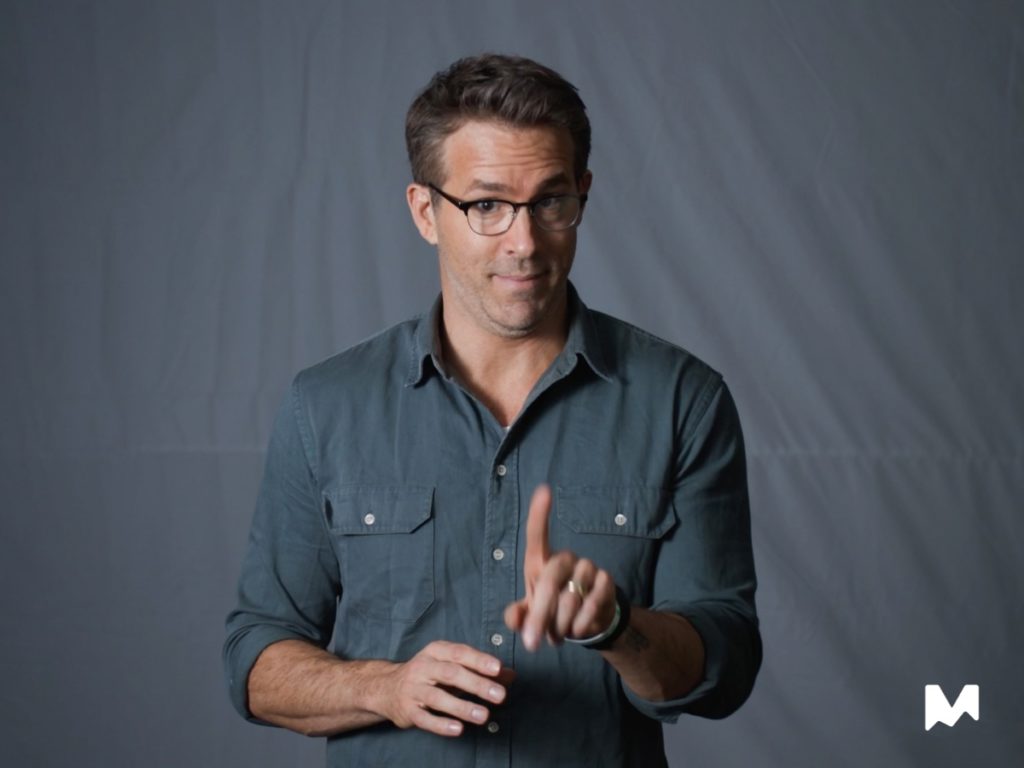From the MNTN Slack: What Netflix’s Q1 Report Signals About the Future of Streaming
by Cat Hausler
8 Min Read
CES 2024: Stagwell (STGW) and MNTN Announce Partnership in Unified Performance SolutionsLearn More
More leads, more demand gen, less effort—what’s not to like about that?

4 Min Read
We’re no stranger to B2B marketing. And that’s because we’re a B2B brand ourselves—we spend a lot of time and energy trying to reach advertisers and educate them on the necessity of adding CTV / OTT advertising (and more specifically, Performance TV) to their media strategies.
It would be downright negligent if we weren’t running CTV advertising campaigns ourselves. So our Chief Creative Officer Ryan Reynolds created a couple of ads—one with him on-screen speaking directly to the audience, the other with him providing a voice over. We launched them simultaneously and monitored their performance to see which one was more effective.
The results were pretty surprising…but we won’t get into the specifics of that test here. Check out our case study for that story, it’s definitely worth the read. Instead, we want to focus on the fact that our Performance TV campaigns generated a greater share of monthly leads (16.49%) than our Google paid search campaigns (15.46%).
“Google is capturing the existing demand. Performance TV is generating demand,” says Hooman Javidan-Nejad, director of performance marketing at MNTN. If you’re trying to build your customer base and expand your market to capture prospective customers, this is an invaluable asset in your media strategy.
When a B2B CTV campaign beats a paid search campaign for conversions, it’s kind of a big deal.
Google paid search has earned a solid reputation as a go-to for direct-response digital advertising. It’s positioned at an extremely vital moment in a potential customer’s journey—when a user is actively searching for what they need.
This has some major benefits for advertisers:
Let’s use a good old sports/playground analogy. Have you ever played basketball, and someone just hung out around the net waiting for the ball to come to them for an easy layup? That’s called cherry picking. And cherry picking is a pretty good description for paid search advertising.
They’re not passing the ball up the court, or generating demand (ok this analogy is getting kind of messy, stick with me though). They were just there to drop the ball through the hoop and claim the conversion.
Performance TV, meanwhile, reaches audiences of viewers who fit the profile of someone who would likely benefit from partnering with MNTN for their Connected TV advertising—even if they don’t know it yet.
“Performance TV conversions are incremental to what we were able to capture via paid search as existing demand,” says Javidan-Nejad. “Capturing existing demand is grabbing low-hanging fruit. What’s next after that? For us, demand generation is much more valuable than capturing the existing demand.”
While paid search has an advantageous placement in the consumer journey, it’s not without its own set of challenges. It’s a crowded space, so you’re almost guaranteed to be competing against your industry rivals.
To effectively compete in paid search, you need constant optimization and years of experience. You must test different bidding strategies, ad copy, and customized landing pages relevant to targeted search terms. It’s not easy, and it’s why many companies outsource to outside agencies.
“It’s a process of constantly adding and removing different keywords and search terms to discover the sweet spot,” says Javidan-Nejad. “It takes a lot of expertise and work hours, not to mention burning a lot of brain cells along the way.”
This isn’t the case with Performance TV, however. You don’t need years of experience or expertise to utilize the platform. It’s simply a matter of picking your ideal audience, picking a campaign goal, and uploading your ad creative. From there, its automated media buying technology optimizes campaign bidding, frequency, and inventory to ensure the campaign hits its performance goal.
And in the case of MNTN’s campaign, that simple and easily manageable platform delivered more conversions than years of optimizations on paid search. It almost doesn’t seem fair.
All that said, Javidan-Nejad has one piece of parting advice for B2B marketers looking to try their hand at Performance TV: don’t forget to optimize your website for conversions.
“Driving qualified traffic, the traffic that actually converts, and doing it at low cost is the first step of driving performance,” he explains. “From there, for B2B brands, it really depends how well they’ve optimized their website for conversions. Performance TV’s job is to drive that qualified traffic at a competitive cost compared to other channels. It’s the website’s job to turn that quality traffic into leads.”
So if you’re a B2B marketer and you’re looking for a net-new channel to increase demand and generate leads, Performance TV could be the right move, especially if you’re already familiar with traditional TV advertising. And, we promise you won’t need years of experience to make the most of it.
Subscribe to the report Apple, Amazon, NBC and more use to get their CTV news.